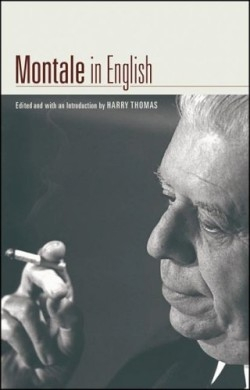Montale in English
Translation has been called “the art of the possible,” and this new collection of poetry demonstrates the spectrum of meaning implied by this phrase. By setting multiple versions of the same poem side by side, the editor allows readers to ponder the nuanced possibilities of many selections from Montale’s three major works: Ossi di Seppia, Le Occasioni, and La Bufera e Altro. Consider, for example, the subtleties in these translations of “New Stanzas”: “The mirage, that in the sky released / towers and bridges” and “Vanished the fata morgana, the bridges of mirage / Towers flung to the clouds.”
Montale’s idiosyncratic poetry has challenged many English-language translators because of its obscure, often cryptic language. His work, lauded for its profound originality during his lifetime, will interest many readers, especially those with a fondness for modernists such as Ezra Pound, William Carlos Williams, and Wallace Stevens.
Poets of the Italian Hermetic school, most notably Montale, Salvatore Quasimodo, and Giuseppe Ungaretti, responded to the censorship they experienced under Italian fascism by coding their work with private imagery. Montale, whose literary career suffered because of his refusal to join the Italian Fascist Party, often used natural settings that reach for transcendence. Many of his poems take place outdoors, at beachside hotels or among fruit trees, and focus on seemingly frozen moments in time and nature. Their landscape is specific, and the people remain distant and unnamed. Many poems address an unspecified “you” whom the speaker misses, and the women in various poems are often idealized stand-ins for real women Montale knew.
Montale in English offers a comprehensive look at Montale’s translators, who include Edith Farnsworth, Robert Bly, Robert Lowell, Samuel Beckett, Mario Praz, Jonathan Galassi, and Allen Mandelbaum. Translations follow the order of Montale’s publications, allowing the reader to develop a sense of his work as a growing and organic body. However, the experience of reading translations that are similar, yet different, is also oddly disorienting.
Thomas’s fidelity to the order of Montale’s publications creates some confusion, because multiple translations of a single poem are not marked. First-time readers may be frustrated when beginning to read a second or third version of the same poem, especially when the poems are untitled. The perplexity is compounded by the introductions to each translator that accompany his or her first appearance in the book. A separate section containing the translators’ biographies would have been less intrusive. However, Thomas, who has also translated Joseph Brodsky’s Gorbunov and Gorchakov and edited The Selected Poems of Thomas Hardy, has given English readers a unique and pleasurable introduction to this Nobel Prize-winning poet’s work.
Disclosure: This article is not an endorsement, but a review. The publisher of this book provided free copies of the book to have their book reviewed by a professional reviewer. No fee was paid by the publisher for this review. Foreword Reviews only recommends books that we love. Foreword Magazine, Inc. is disclosing this in accordance with the Federal Trade Commission’s 16 CFR, Part 255.

